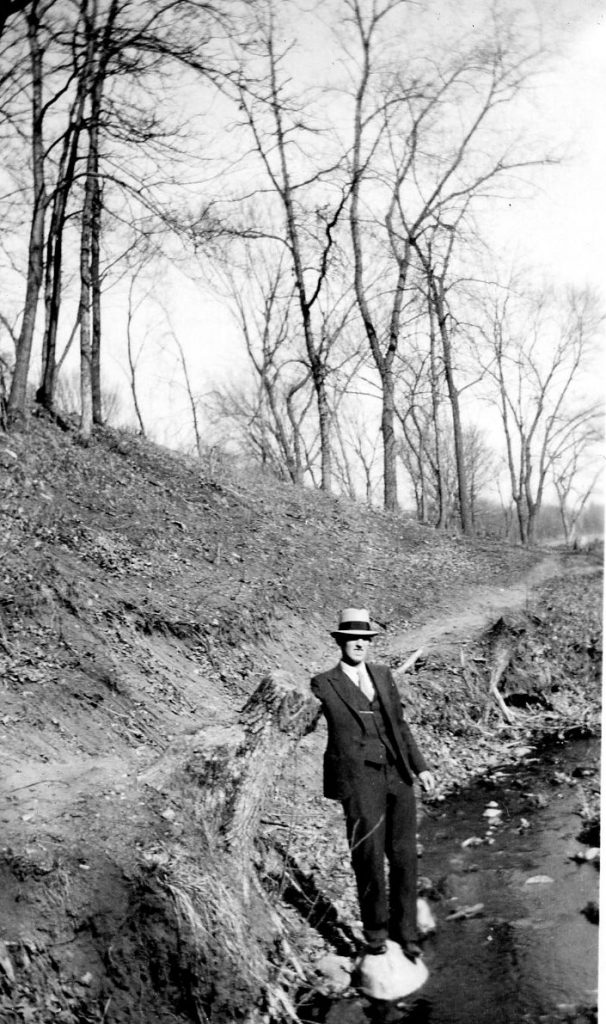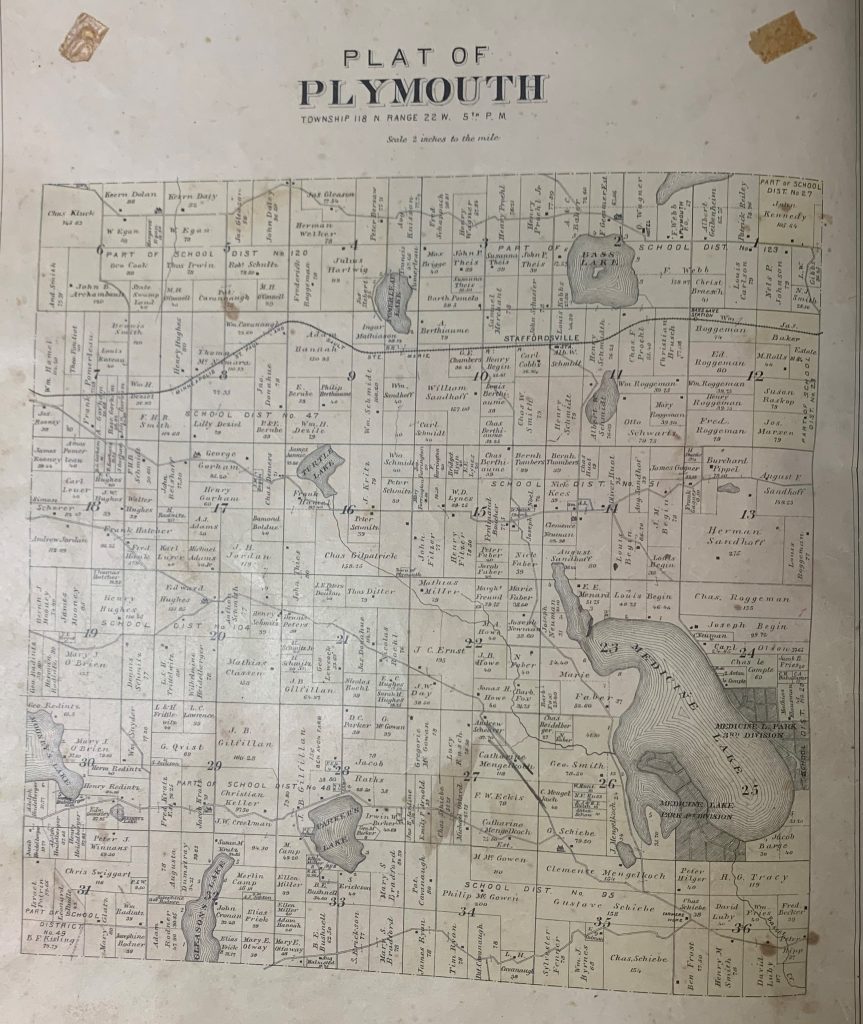Plymouth’s Historic Town Hall: pt. 2

The siting of Plymouth’s first town hall building is a result of its European settler’s ideals surrounding democratic principles. The town hall is located in what would have been the historic median point of town, as indicated in the 1898 plat map of Plymouth (below). This location was meant to provide equal travel distance to all of Plymouth’s residents who were permitted to participate in local government actions of the time, including voting and town meetings. The physical land for the hall was donated for city gathering by Charles Farrington, a local farmer (see plat 79). This placed the building right along the banks of Plymouth Creek, a key waterway within the Bassett Creek Watershed.

The Bassett Creek Watershed refers to a network of waterways that begins in the Medicine Lake area of Plymouth, flowing twelve miles through the northwest suburbs until its eventual joining with the Mississippi River near Nicollet Island in Minneapolis. Plymouth Creek, which drains most of south and central Plymouth, is the most important tributary into Medicine Lake, thereby directly connecting the site of the town hall with the Twin Cities’s lifeblood waterway, the Mississippi.
Before European settlement, the marshlands along Plymouth Creek and throughout the watershed area would provide natural water filtration. However, following industrial development of the mid-1800s along the creek bed, Bassett’s Creek became heavily polluted as it entered Minneapolis, earning it the moniker “the sewer known as Bassett’s Creek.” After years of infill and continued pollution, a monumental flood of the waterway took place in 1913, precipitating action by Minneapolis officials to enclose the waterway as it flowed within the city. This action, however, did not account for the increased development of the watershed’s suburban areas, including Crystal, Golden Valley, Medicine Lake, Minnetonka, New Hope, Plymouth, St. Louis Park, and Robbinsdale.
A commission of these municipalities was formed in 1969, today called the Bassett Creek Water Management Commission, with the goal to address water quality and flooding issues affecting the watershed area. The commission continues this mission in 2020, working to educate and partner with community members to improve surface and groundwater management to maintain the health of the area’s waterways. Plymouth Creek continues to flow behind the first town hall, surrounded by woods and wildlife that echo its historic setting and purpose, today interjected with the sounds of frisbee golfers playing a round on the course interwoven along this important creek bed.
More information regarding the Bassett Creek Water Management Commission can be found at: https://bassettcreekwmo.org/about/our-history
Information for how you can help protect Plymouth’s important waterways can be found at: https://www.plymouthmn.gov/departments/administrative-services-/communications/environmental-education/protect-our-lakes-streams